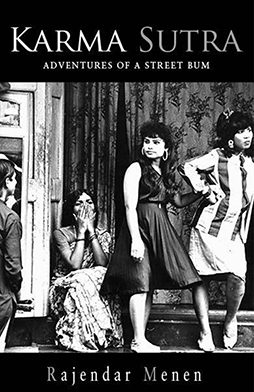By Deepti
LIVING on the streets can be dangerous but it can be exciting too. Seeking not just the adventure but to gain an insight into the inhabitants of the streets, the author takes the readers into the bylanes of Mumbai and its various red-light districts with houses in a shambles but human spirits concrete, colourful and rich as reflected in clothes, loud makeup and cat calls.
Menen peeps not into the lanes alone but also into the lives of thousands of girls, boys and transvestites who were picked up and sold in the bazaars and forced into the ‘dhanda’. Most of these can never shed off the luxuries, the identity that becomes their own once they have lost their bodies to countless unrecognisable faces. He not only speaks about the tragic loss of their childhood, their life of exploitation and lovelessness but also depicts the way in which this imposed life has saved them from a decrepit existence without food and any sense of security where their honour would have been violated sooner or later. Such are the comforts that they never want to go back, failing all rehab projects except in the cases where they let go off their profession on finding a life partner.
The author throws the limelight on dazzling Mumbai, “a heroin fix”. The city sucks in youth with its allure of drugs and sex. On Juhu beach, one gets relief from the ever-moving Mumbai and it is also a home to the homeless, a meeting point for night escapades and a lucrative beat for the policemen. The paradox lies in the fact that they will pounce on you if you are caught with your girlfriend, but will encourage your dalliance with a sex worker. Juhu is also the dream machine for strugglers who come with Bollywood dreams in their eyes. After years of ‘struggle’, most of them end up being ruined forever and cannot return to their small hometowns. Colaba with its cramped physical space, but ample personal space is a place where you might be living with a drug peddler, mafia but if no questions are asked you will escape as safe a butterfly on a flower. It is a place where “you just say aloud your fondest desires” and Mumbai, “like a genie, will deliver”. Menen says that probably he liked to live vicariously as there was a thrill in watching and being with people who did what he could not.
Through a series of interviews, Menen gives a realistic portrayal of the lives as lived on the streets. His canvas is busy, bustling, crowded but each character has a distinctive identity. From the elite ‘escort’, to the cleanliness freak south Indian sex worker, a twelve-year-old drug addict, to the gigolo in colourful shirts and rin white trousers, garrulous driver, first Indian AIDS patient, vivacious dancers, fearsome hijras, everyone’s story is weaved into the complex fabric of Indian streets. The descriptions and pathos remind one of Tarun Tejpal’s descriptions of lives of the underdogs in The Story of My Assassins.
Menen has given detailed descriptions about the darkness of the street, colours of red light areas and lives of the marginalised. He subtly interweaves humour in the tales, for instance about the heroin addict dog and his filmy style escape from a pimp. Here the sex worker is feared, she is condemned because she can break the moral fabric of the society and truth being the first casualty on streets. The author vividly describes the ten by ten feet rooms, creaking beds, cheap, nylon curtains and the intimacy provided by a torn saree hung over a bed. He has captured the magical mosaic of the streets abound with its smells and noises in a cinematic technique beginning with an establishing shot and zooming on slowly into the streets and multiple facets of its inhabitants.
—— The Sunday Tribune


Leave a Reply